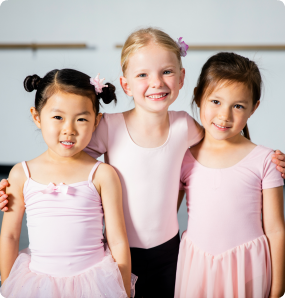 This content was originally published by Creating a Family, the national infertility education and support nonprofit.
This content was originally published by Creating a Family, the national infertility education and support nonprofit.
When most people think of an adoptive family, they usually think of families where all the children are adopted. In fact, however, many families in the U.S. have both adopted and biological kids. I suspect these families are on the rise. Should you combine bio kids and adopted kids in the same family?
The National Survey of Family Growth found that “an equal percentage of women who have and who have not had a birth have adopted children” and that “four times as many men who have fathered children have adopted children compared with women who have given birth.” While the language is a bit convoluted as you would expect from government bureaucracy, suffice it to say, that is a lot of families that have combined bio and adopted kids.
reasons families combine adopted and non-adopted kids
I’ve seen no research on why families have both adopted and biological kids, but from what we see in our audience and online community, the following reasons are the most common:
- unexplained secondary infertility
- wanting to have children in a second marriage at an older age, and
- the desire to adopt even though they have not experienced infertility.
- A little-discussed reason, but one that is growing, is families going back into fertility treatment after adopting, and many of them are successful.
 do parents favor their bio kids over adopted kids
do parents favor their bio kids over adopted kids
Scientists have speculated that evolution would logically predict that parents would favor their biologically related children over their adopted kids. This theory, known as the Kin Selection Theory, further predicts that parents should also have less favorable perceptions of the intellect, personality, and other behavioral traits of their adopted kids, compared with their biological children.
Recent research sheds light on this evolution theory of how parents of both adopted and biological kids view their children. Researchers studied 135 virtual twin pairs – similar aged unrelated siblings raised together. (Check out Creating a Family resources on Virtual Twins, also known as Artificial Twins.) Of the virtual twin pairs, 41 were adopted/biological pairs and 94 were adopted/adopted pairs. The average age of the children in this study was 6 years.
The children’s IQ was tested and the parents were asked to fill out an Adjective Checklist and a Child Behavior Checklist for both children in the virtual twin pairs. Biological children scored higher on IQ tests than did adopted children, which is consistent with prior research.
In general, the study found that parents did not favor their biological children over their adopted children.
Although parents rated their adoptive children higher in negative traits and behaviors like arrogance and stealing, they scored both adopted and biological children similarly when it came to positive traits like conscientiousness and persistence.”
Keep in mind that the number of adopted/biological virtual twin pairs was small and the children studied were young, but the findings are still interesting.
 resources to help blended families
resources to help blended families
Creating a Family, the national adoption and foster care education and support organization, has many additional resources to help families that have both biological and adopted kids. Check out a few of these:
- Blended Families: Combining Kids Through Birth and Adoption (8 min. video)
- Top Ten Tips for Blending Children by Birth and Adoption
- Preparing Children for the Adoption of a Sibling and Integrating Adopted and Biological Kids Post-Adoption (1 hr. radio interview with experts)
Other helpful resources
- Moving from Infertility Treatment to Adoption
- Is It Fair To Your Child To Go Back Into Fertility Treatment After Adopting
- Tales From a Blended Family: Swimming in Mom’s Pee
Originally published in 2015; updated in 2019 by Dawn Davenport on Creating a Family.


